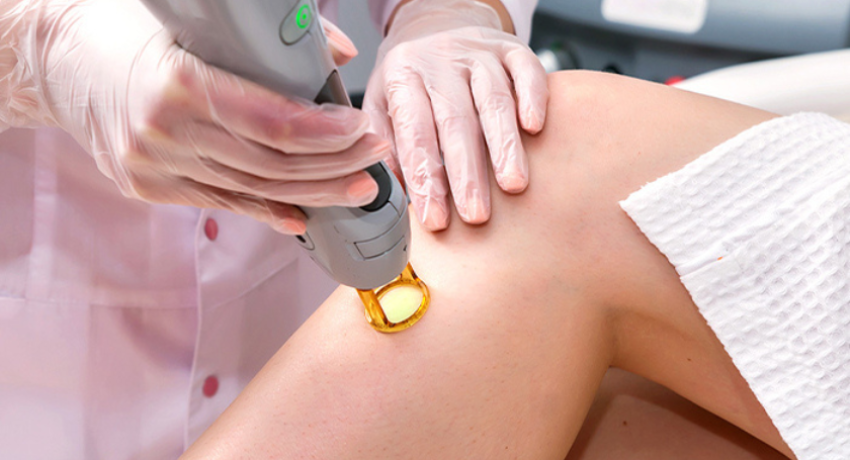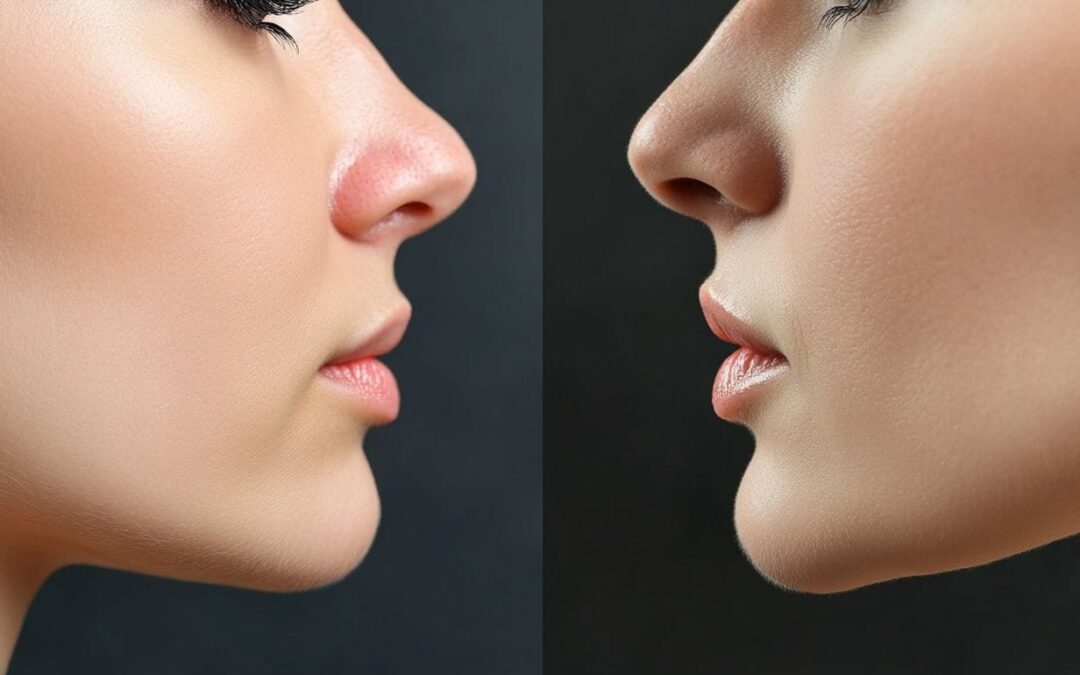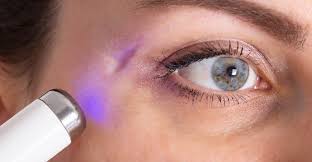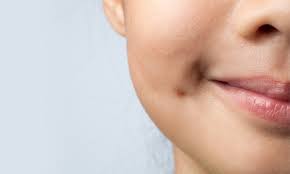
by laraibnaeem2005 | Jun 27, 2025 | Health
Laser hair removal is a leading choice for individuals looking for long-term hair reduction, but those with darker skin tones often ask, can laser hair removal be done on dark skin safely? The answer is yes—thanks to advancements in laser technology. Historically, this treatment was more challenging for individuals with high melanin levels, but today’s refined techniques and specialized devices make it safer and more effective than ever. However, achieving optimal results without compromising skin health requires the use of proper laser systems and personalized settings tailored to darker skin types.
Understanding the Treatment for Melanin-Rich Skin:
Laser Hair Removal in Dubai(إزالة الشعر بالليزر في دبي) targets melanin (the pigment found in both hair and skin) to heat and damage the follicle, preventing further growth. The challenge with dark skin lies in the fact that the skin itself contains more melanin, increasing the risk of the laser affecting both the skin and the hair follicle. If not done correctly, this can result in skin damage. That’s why using the right wavelength and technique is crucial to ensure safety and effectiveness.
What Makes Treatment Safe for Dark Skin?
-
Advanced laser systems like Nd:YAG and Diode
-
Proper wavelength that bypasses surface melanin
-
Controlled energy pulses to reduce skin trauma
-
Experienced specialists who customize settings for each skin tone
These elements ensure that the laser penetrates deeply enough to treat the hair follicle without harming the surrounding skin.
The Importance of Technology in Treatment Outcomes:
Not all lasers are created equal. For dark skin, the Nd:YAG laser is often considered the safest option because of its longer wavelength (1064 nm), which penetrates deeper and bypasses melanin in the epidermis. The Diode laser (810 nm) is another viable option when used with customized settings. These devices minimize the risk of hyperpigmentation, burns, and scarring—issues that older, less selective lasers could cause on darker complexions.
Preferred Technologies for Dark Skin:
-
Nd:YAG Laser (1064 nm): Deep penetration with minimal melanin absorption
-
Diode Laser (810 nm): Effective for a wide range of hair types with proper calibration
-
Contact cooling: Protects the skin’s surface and increases comfort
With these tools, dark skin can be treated just as successfully as lighter tones, when performed correctly.
Risks and How to Avoid Them:
While laser hair removal on dark skin is now much safer, there are still risks if the treatment isn’t performed by skilled hands or with appropriate equipment. Darker skin is more prone to side effects like hyperpigmentation (dark patches), hypopigmentation (light patches), burns, or scarring—especially when the wrong laser is used or incorrect energy settings are applied.
Common Risks Include:
-
Hyperpigmentation: Excess melanin production after inflammation
-
Hypopigmentation: Loss of pigment due to damage
-
Burns or blistering: From overly aggressive energy settings
-
Scarring: Rare but possible if aftercare is not followed
A thorough consultation, patch test, and use of suitable devices significantly reduce these risks.
Key Benefits for Dark Skin Individuals:
Despite the concerns, Laser Hair Removal(إزالة الشعر بالليزر) offers numerous benefits for darker skin tones. Individuals who struggle with razor bumps, ingrown hairs, or post-shaving discoloration—especially in areas like the bikini line, underarms, or face—often find lasting relief through laser treatments. Hair grows back slower, finer, and in many cases, may stop growing altogether after several sessions.
What You Can Expect:
-
Long-term reduction in hair growth
-
Smoother skin with fewer ingrown hairs
-
Even skin tone with reduced irritation
-
Greater convenience compared to shaving or waxing
These results improve not just appearance, but also daily comfort and confidence.
FAQs About Laser Hair Removal for Dark Skin
Q: Is laser hair removal permanent for dark skin?
A: It leads to long-term hair reduction. Most people experience significant thinning and slower regrowth after multiple sessions.
Q: How many sessions will I need?
A: Usually 6–10 sessions are required, depending on the area treated, hair thickness, and hormonal factors.
Q: Can it treat facial hair safely on dark skin?
A: Yes, especially with Nd:YAG lasers. Areas like the upper lip, chin, and cheeks respond well when properly treated.
Q: Is there downtime or recovery needed?
A: Minimal. Some redness or warmth may occur, but it typically subsides within hours.
Q: How should I prepare for treatment?
A: Avoid tanning, waxing, or plucking before your session. Shave the area 24 hours before the appointment.
Conclusion: Safe and Effective with the Right Approach
So, can laser hair removal be done on dark skin safely? Yes—when advanced technology and expert technique come together. With the right laser system, trained providers, and tailored settings, individuals with dark skin can safely enjoy all the benefits of laser hair removal. As with any cosmetic procedure, consultation and customization are essential to ensure beautiful, lasting, and damage-free results.

by laraibnaeem2005 | Jun 26, 2025 | Health
If you’re thinking about enhancing your lips for a fuller, more defined look, you’ve likely asked yourself, what’s the cost of lip filler injections? Lip Fillers Injections in Dubai(حقن الشفاه الفيلر في دبي) are one of the most sought-after cosmetic treatments, offering volume, symmetry, and hydration with minimal downtime. While the exact cost can vary depending on several factors, understanding what influences the price and what you’re paying for can help you make an informed decision before scheduling your session.
Factors That Influence the Price of Lip Fillers:
The cost of lip filler injections isn’t a one-size-fits-all figure. It’s influenced by multiple aspects related to the treatment itself and your personal aesthetic goals. Knowing these factors can help you anticipate a realistic price range and avoid surprises.
Cost-influencing factors include:
-
Amount of filler used: The more volume you desire, the more product will be required.
-
Type of filler selected: Some hyaluronic acid fillers are longer-lasting or more premium in formulation.
-
Treatment area complexity: Correcting asymmetry or enhancing specific lip features may require advanced techniques.
-
Frequency of touch-ups: Maintenance sessions every 6 to 12 months can add to the overall investment over time.
Each of these elements plays a role in how much you’ll spend, and understanding them helps you choose the most suitable approach for your budget and beauty goals.
Why Lip Filler Pricing Varies So Widely?
There’s often a broad range when it comes to lip filler costs, and that’s because no two treatments are exactly the same. For instance, someone seeking a subtle enhancement will likely need far less filler than someone going for a dramatic transformation. The experience of the injector and the brand of filler also contribute to pricing.
Additional cost-related considerations:
-
Customization level: Tailored treatments often involve more planning and time.
-
Longevity of the filler: Some formulations are designed to last longer, affecting how often you need refills.
-
Geographic location: Costs can differ significantly based on where you live or receive the treatment.
-
Aesthetic goals: Desired shape, contouring, and plumpness may affect both technique and product quantity.
It’s not just about the number of milliliters injected—it’s about achieving natural, flattering results with safety and precision.
Are There Any Risks When Choosing Based on Price?
When exploring the cost of lip filler injections, it’s tempting to look for the lowest price—but this can sometimes come at a cost to your safety or outcome. Not all injectors or filler products are the same, and cheaper often means compromise.
Risks of choosing low-cost filler treatments:
-
Use of low-quality or counterfeit filler products
-
Inexperienced or unqualified injectors
-
Increased chance of lumps, migration, or unnatural results
-
Higher likelihood of needing correction or reversal
-
Risk of complications like vascular occlusion or infections
Always prioritize safety, skill, and proven product quality over low pricing. Beautiful, safe results are worth the investment.
Benefits of Lip Filler Injections:
Despite the varying costs, lip filler injections offer significant benefits when done correctly. Whether you want to correct naturally thin lips, add volume, or restore youthful definition, fillers provide instant and long-lasting improvements with minimal recovery time.
Notable benefits include:
-
Customizable results for every lip shape
-
Enhanced lip symmetry and definition
-
Youthful volume without surgery
-
Hydration boost from hyaluronic acid
-
Gradual and reversible changes if desired
With the right Lip Fillers Injections(حقن الشفاه الفيلر) and technique, your lips can look natural, smooth, and perfectly contoured, boosting both appearance and confidence.
FAQs About Lip Filler Cost and Value:
How much filler is typically used in one session?
Most people require 0.5 to 1 ml of filler for noticeable yet natural results.
Is the cost the same every time?
Not always. Maintenance sessions may require less product, reducing the overall cost per visit.
Are results permanent?
No. Most lip fillers last 6 to 12 months, after which repeat treatments are needed.
Is it cheaper to do multiple areas at once?
Some providers offer package deals for combining treatments, but this varies by practice.
Can I dissolve the filler if I don’t like it?
Yes, hyaluronic acid fillers can be dissolved with an enzyme if needed.
Conclusion: Balancing Cost with Quality and Safety
So, what’s the cost of lip filler injections? It depends on several factors, including the type of filler used, the amount injected, and your personal goals. While it’s natural to consider price as part of your decision, remember that skill, experience, and product quality are just as important—if not more so. Lip fillers are an investment in your appearance and self-confidence. By choosing quality over shortcuts, you ensure beautiful, safe, and satisfying results that are well worth the cost.You have not enough Humanizer words left. Upgrade your Surfer plan.

by laraibnaeem2005 | Jun 25, 2025 | Health
If you’re planning a cosmetic enhancement, one crucial step is knowing what foods or medications should I avoid pre-filler? While dermal Filler Injections in Dubai(حقن الفيلرز في دبي) are minimally invasive and require little downtime, proper preparation is essential to reduce potential side effects like bruising, swelling, or adverse reactions. The days leading up to your appointment are just as important as the treatment itself—and a few small adjustments can lead to better, longer-lasting results.
Why Preparation Matters Before Fillers?
Preparing your body for dermal fillers ensures a smoother procedure and minimizes unwanted outcomes. Certain foods, supplements, and medications can increase your risk of bleeding and bruising by thinning your blood or affecting circulation. Others might cause inflammation or interfere with healing. Understanding what to avoid pre-filler not only helps reduce complications but also allows the filler to settle evenly and safely into your skin.
Even though filler appointments are often quick, thoughtful pre-treatment preparation makes a big difference in your overall experience and recovery time.
Medications to Avoid Before Fillers:
Certain medications are known to increase bruising by thinning the blood or affecting platelet function. If you’re wondering what medications should I avoid pre-filler, consider temporarily pausing (under medical guidance) the following:
-
Aspirin
-
Ibuprofen (Advil, Motrin)
-
Naproxen (Aleve)
-
Non-steroidal anti-inflammatory drugs (NSAIDs)
-
Blood thinners, such as warfarin or clopidogrel (consult your healthcare provider)
-
High-dose vitamin E supplements
Always consult with your physician before stopping any prescribed medication. In cases where blood thinners are medically necessary, your filler appointment may still proceed with caution and added post-care measures.
Foods and Supplements to Avoid:
In addition to medications, some common foods and herbal supplements can also impact how your body reacts to filler injections. These substances may increase blood flow or inflammation, raising the risk of bruising or swelling:
-
Alcohol: Avoid for at least 24–48 hours before treatment; it dilates blood vessels and increases bruising risk.
-
Garlic and onions: In large amounts, these can act as natural blood thinners.
-
Fish oil and omega-3 supplements: These support heart health but can contribute to thinner blood.
-
Ginkgo biloba, ginseng, and St. John’s Wort: These herbs may interfere with clotting.
-
Spicy foods: Can increase inflammation and may trigger flushing or sensitivity pre-treatment.
-
Green tea: Healthy in moderation, but excessive amounts can thin the blood.
Avoiding these substances for at least 3–5 days before your filler session can significantly reduce the chance of post-treatment discoloration or puffiness.
Benefits of Proper Pre-Filler Preparation:
Preparing for your dermal Filler Injections(حقن الفيلرز) treatment doesn’t just lower the risk of side effects—it also enhances the final result. Key benefits include:
-
Reduced bruising and swelling, leading to quicker healing
-
Improved filler placement due to more stable tissue conditions
-
More predictable results as the skin responds well to the product
-
Increased comfort during and after treatment
-
Better longevity of the filler due to smoother integration
Making these small changes in advance can result in a more comfortable experience and more refined cosmetic outcome.
Frequently Asked Questions:
How many days in advance should I avoid these foods or medications?
Ideally, stop taking any non-essential blood-thinning substances 5–7 days before treatment, and avoid alcohol 24–48 hours before.
Can I take pain relievers before my filler appointment?
Yes, but avoid NSAIDs like ibuprofen. If needed, you may take acetaminophen (paracetamol), as it doesn’t affect blood clotting.
Is caffeine okay before fillers?
A small amount is usually fine, but excessive caffeine can increase blood pressure and heighten sensitivity during the procedure.
Should I fast before getting fillers?
No fasting is necessary. However, eating a light, healthy meal beforehand can help maintain energy and prevent lightheadedness.
Do I need to stop taking daily vitamins?
Only high-dose vitamin E or blood-thinning herbal supplements need to be paused. Multivitamins are generally safe unless otherwise directed.
Conclusion:
Knowing what foods or medications should I avoid pre-filler is a vital step toward a successful and stress-free experience. By steering clear of blood thinners, inflammatory foods, and certain supplements before your appointment, you can reduce bruising, accelerate recovery, and achieve smoother, more natural-looking results. Thoughtful preparation sets the foundation for optimal outcomes—so you can enjoy your refreshed look with confidence and peace of mind.

by laraibnaeem2005 | Jun 24, 2025 | Health
Laser scar revision has become a leading non-invasive solution for individuals seeking to reduce the visibility of scars and restore smoother, more even-toned skin. It works by delivering focused light energy to the affected area, targeting both the surface and deeper layers of the skin to encourage natural healing, collagen production, and pigment correction. If you’re wondering what are the benefits of laser for scar revision, the answer lies in its ability to offer noticeable results without the need for surgery or lengthy downtime. From surgical Laser Scar Removal in Dubai(إزالة الندبات بالليزر في دبي) to acne marks, this advanced technique helps redefine skin texture and tone safely and effectively.
Understanding the Importance of Scar Revision:
Scars are the body’s natural response to skin injury, but their appearance can often impact self-confidence and emotional well-being. Whether caused by surgery, trauma, burns, or acne, scars can be raised, indented, discolored, or textured in ways that disrupt the skin’s uniformity. Laser scar revision provides a targeted approach to address these imperfections by:
-
Reducing the thickness or prominence of raised scars
-
Softening and smoothing out rough textures
-
Minimizing discoloration such as redness or pigmentation
-
Stimulating collagen to fill in atrophic (sunken) scars
The importance of effective scar revision lies not just in aesthetics but also in helping individuals feel more comfortable in their skin—physically and emotionally.
Common Risks to Consider with Laser Treatment:
While laser scar revision is generally safe and well-tolerated, it’s essential to understand the potential risks involved. These may vary based on skin type, laser settings, and post-treatment care. Possible side effects include:
-
Temporary redness, swelling, and sensitivity in the treated area
-
Mild peeling or dryness as the skin renews itself
-
Risk of hyperpigmentation or hypopigmentation, particularly in darker skin tones
-
Occasional bruising or minor scabbing
These side effects are usually short-lived and manageable with proper aftercare, including sun protection and gentle skincare. A patch test or initial consultation is often recommended to assess skin compatibility and avoid complications.
Key Benefits of Laser Scar Revision:
Laser Scar Removal(إزالة الندبات بالليزر) therapy for scars offers numerous benefits that set it apart from other scar treatments. Some of the most notable advantages include:
-
Non-invasive procedure: Unlike surgical scar revision, laser treatment doesn’t involve cutting or stitches, which reduces the risk of infection and scarring from the procedure itself.
-
Precision targeting: Lasers can be adjusted to treat specific skin depths and types of scars, whether superficial or deep.
-
Improved skin texture and tone: Lasers resurface the skin, making it smoother, more uniform, and less discolored.
-
Stimulates natural collagen: Over time, the laser boosts collagen production, which helps plump up indented scars and improve firmness.
-
Minimal downtime: Most patients can resume normal activities within a few days, making this an ideal option for those with busy schedules.
These benefits make laser scar revision an appealing choice for people who want visible results without invasive procedures or extended healing periods.
Frequently Asked Questions (FAQs):
Q: Is laser scar revision permanent?
A: While results are long-lasting, some scars may require maintenance treatments, especially if they’re caused by conditions like acne that can recur.
Q: How soon can I see results after laser scar revision?
A: Some improvement can be seen after the first session, but full results typically develop after multiple sessions over several weeks.
Q: Does laser treatment work on all types of scars?
A: Laser revision is effective for many scar types, including hypertrophic, atrophic, post-surgical, and pigmented scars. However, keloid scars may respond differently and may need a combination approach.
Q: Will the treatment lighten dark scars?
A: Yes, lasers can reduce pigmentation and help even out skin tone, especially for scars that appear red, brown, or purple.
Q: Can I combine laser treatment with other therapies?
A: Yes, it can be combined with microneedling, topical treatments, or PRP for enhanced results, depending on the scar type.
Conclusion:
So, what are the benefits of laser for scar revision? The treatment offers a blend of safety, efficiency, and customization that makes it highly effective for a wide variety of scars. From improving texture and reducing thickness to fading discoloration and encouraging skin regeneration, laser therapy provides a powerful, non-invasive solution for achieving clearer and smoother skin. By choosing laser scar revision, you’re investing in a treatment that not only improves your appearance but also helps restore confidence in your skin’s natural beauty.

by laraibnaeem2005 | Jun 23, 2025 | Health
Dimple creation surgery is a cosmetic procedure designed to add a natural and youthful charm to your smile by surgically forming dimples on the cheeks. With its rising popularity, many people are now considering this minimally invasive procedure. However, one of the most important decisions you’ll make is how to choose the right surgeon for dimples. Selecting a qualified, skilled, and experienced professional significantly affects your results, healing experience, and overall satisfaction. Not all cosmetic procedures are equal—and neither are the professionals performing them.
Why Choosing the Right Surgeon Matters?
Dimple Creation in Dubai(إنشاء الغمازات في دبي) may seem like a simple, quick procedure, but it involves delicate facial anatomy. Poor technique can result in asymmetry, unnatural dimples, or complications that could have been easily avoided with the right hands. A qualified surgeon understands not only the aesthetics of facial balance but also the muscle and tissue interactions required for natural-looking dimples.
Key Reasons to Be Selective:
-
Your face is your most visible feature
-
Long-term results depend on precision and technique
-
Risks increase significantly with inexperienced providers
-
Proper aftercare guidance is essential for healing
A trusted professional will not only perform the procedure well but will also guide you through recovery and help manage expectations.
Essential Qualities to Look For:
When evaluating your options, focus on specific traits and credentials. The best surgeon for dimple creation will combine technical expertise with an eye for facial harmony. While credentials are vital, communication and aesthetic understanding are equally important.
Qualities That Indicate a Skilled Surgeon:
-
Strong background in facial cosmetic procedures
-
Aesthetic sense and ability to explain realistic outcomes
-
Transparent, respectful communication style
-
Evidence of continued education and updated techniques
-
Familiarity with dimpleplasty and minimally invasive facial enhancements
Don’t hesitate to ask detailed questions about their experience with dimple creation specifically—not just general cosmetic work.
Risks of Choosing the Wrong Provider:
The risks of selecting an inexperienced or unqualified provider for your dimple surgery can go beyond poor cosmetic outcomes. The face contains sensitive structures, and incorrect handling can lead to nerve damage, infections, or facial asymmetry that may require revision.
Common Mistakes from Inexperienced Surgeons:
-
Dimples placed too low, too high, or unevenly
-
Over-aggressive suturing leading to permanent indentations
-
Dimples that disappear quickly due to incorrect technique
-
Poor healing and scarring from improper aftercare guidance
Choosing the right professional helps minimize these risks and improves your chances of achieving a natural, symmetrical result that enhances your smile.
Benefits of the Right Surgeon for Dimples:
When you choose a surgeon who specializes in facial aesthetics and Dimple Creation surgery(جراحة إنشاء الغمازات), the benefits go beyond the procedure itself. You receive proper consultation, realistic expectations, tailored advice, and aftercare support. This not only leads to beautiful results but also gives you peace of mind throughout your journey.
Positive Outcomes Include:
-
Balanced, well-placed dimples
-
Faster and smoother healing
-
Results that look natural when smiling
-
Lower chances of needing revision surgery
The right surgeon listens to your goals, assesses your facial structure carefully, and works with your natural features—not against them.
FAQs About Choosing a Dimple Surgeon:
How can I check a surgeon’s credibility?
Look for board certifications, professional affiliations, and reviews or testimonials from past patients. Request before-and-after photos of dimple surgeries they’ve performed.
Should I get multiple opinions?
Yes. Consulting with more than one professional allows you to compare techniques, communication styles, and comfort levels. It also helps you make a more confident choice.
Do I need a facial plastic specialist?
While not always necessary, a surgeon with experience in facial procedures is usually preferred. They are more familiar with facial muscle anatomy and subtle aesthetic balance.
How important is the consultation?
It’s very important. This is your opportunity to evaluate the surgeon’s communication skills, ask about the procedure, discuss concerns, and determine if your expectations align.
Conclusion:
If you’re wondering how to choose the right surgeon for dimples, remember that your decision directly influences your results, experience, and long-term satisfaction. A well-qualified, experienced professional understands the art and science behind facial aesthetics. Take your time, ask questions, evaluate past work, and trust your instincts. By making an informed choice, you’ll ensure that your new dimples enhance—not compromise—your natural beauty and confidence.





